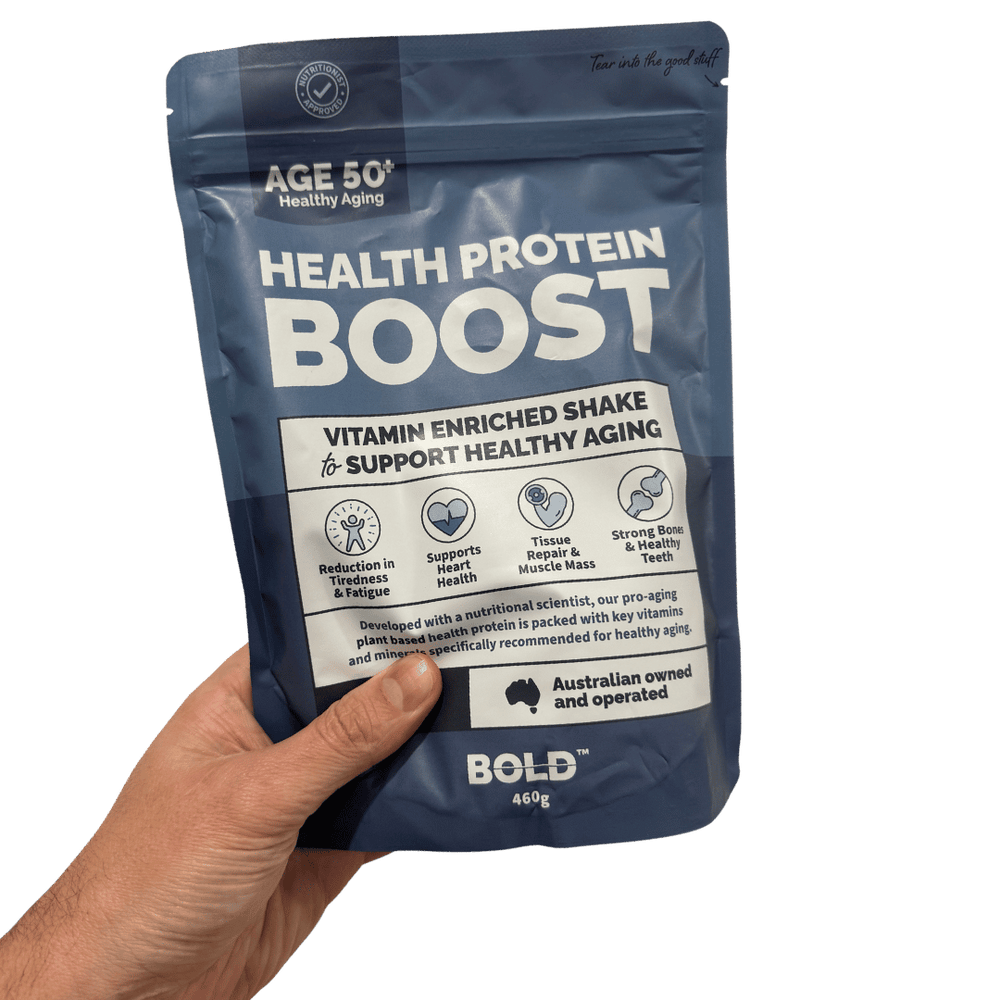Thriving with Type 2 Diabetes: Your Guide to Living Well After 50
As we age, our bodies and health needs change. One condition that becomes more common is type 2 diabetes, a chronic condition that affects the way your body regulates blood glucose.
In Australia, diabetes is a significant public health concern, particularly for people over 50. With the right knowledge, lifestyle changes, and nutritional support, it’s absolutely possible to live well with diabetes.
Short on time? we got you - Quick summary below:
- Ageing reduces insulin sensitivity and physical activity, raising diabetes risk.
-
Diabetes occurs when insulin production or use is impaired, raising blood glucose.
-
Type 2 is the most common form in older adults and linked to lifestyle and age.
-
Over 1.3 million Australians have diabetes; those aged 65–74 are most affected.
-
Balanced nutrition with low-GI carbs can help manage blood glucose levels.
-
Regular exercise improves insulin sensitivity and supports muscle health.
-
High-quality protein supports muscle, metabolism, and blood glucose control.
-
Older adults need 1–1.2g of protein per kg body weight daily, more with exercise.
-
Bold Health Protein Plus is a plant-based supplement ideal for over-50s with diabetes, as it's low calorie, low sugar and high in protein and essential nutrients
Why Diabetes Becomes More Common with Age
As we age, our bodies naturally become less sensitive to insulin.
Combine that with decreased physical activity, slower metabolism, and changes in body composition, and you have a perfect storm for developing type 2 diabetes.
In Australia, the numbers are telling:
-
Over 1.3 million Australians were living with diagnosed diabetes in 2021.
-
People aged 65 to 74 have the highest prevalence, with over 1 in 6 affected.
-
Around 280 Australians develop diabetes every day, and many more remain undiagnosed.
(Source: Diabetes Australia)
Living Well with Diabetes After 50
While a diabetes diagnosis can feel overwhelming, it’s not the end of living a full, vibrant life. Many people over 50 successfully manage their condition with a few key lifestyle adjustments:
1. Balanced Nutrition
There is no need for a special "diabetes diet." The best choices align with the Australian Dietary Guidelines. However, understanding how carbohydrates affect blood glucose is helpful. Choose moderate amounts of lower-GI (glycaemic index) foods such as whole grains, legumes, and vegetables. These foods reduce glucose slowly, reducing blood glucose spikes. Eating carbohydrates as the last part of your meal can also help blood glucose management.
2. Regular Exercise
Exercise is excellent for blood glucose management. Resistance training helps maintain muscle mass, which helps manage blood glucose levels, while aerobic exercise (like brisk walking, swimming, or dancing) improves insulin sensitivity. Aim for at least 30 minutes of moderate activity most days.
3. Routine Monitoring
Keep an eye on your blood glucose levels, cholesterol, and blood pressure. This helps you and your healthcare team make informed decisions.
4. Smart Supplementation
Adding a high-quality protein supplement to your routine can boost protein intake to support muscle mass, which helps with overall energy and blood glucose management. Always discuss new supplements with your healthcare provider, especially if you have kidney issues or take multiple medications.
Why Protein Matters for People with Diabetes
Protein is essential for maintaining muscle, supporting metabolism, and keeping you feeling full—important benefits for anyone, but particularly vital for those managing diabetes.
It also plays a role in stabilising blood glucose by slowing glucose absorption when consumed with carbohydrates.
As we age, our protein needs increase. Most healthy adults over 50 should aim for at least 1–1.2g of protein per kilogram of body weight daily, and more if engaging in strength training or recovering from illness.
For example, a 70kg person should aim for 70–84g of protein per day. You'll need even more protein if you do strength training or other strenuous physical activity. An extra 20-30g of protein supports muscle recovery on training days.
Many older adults can struggle to get enough from diet alone, especially if their appetite or digestion is an issue. People with diabetes should also limit protein foods high in saturated fat, such as fattier cuts of meat.
A Smart Choice: Bold Health Protein Plus
Bold Health Protein Plus is an excellent option for Australians managing diabetes and looking to age actively. Here’s why:
-
High-quality plant-based protein with the complete amino acid profile to support muscle health and recovery.
-
Low in saturated fat, carbohydrates and sugar.
-
Enriched with essential vitamins and minerals to fill common nutritional gaps in older adults.
-
Great-tasting and easy to mix, perfect for adding to smoothies or simply shaken with water or milk.
Bold Health Protein Plus is specially formulated for people over 50 seeking a convenient, effective way to boost their protein, vitamin and mineral intake without compromising their blood glucose control. As always, consult your healthcare provider before starting any new supplement.
Final Thoughts
Getting older doesn’t mean giving up on health and vitality—especially when it comes to diabetes. With mindful eating, regular movement, and the right nutritional support like Bold Health Protein Plus, you can stay strong, feel energised, and enjoy life on your terms.
If you’re over 50 and managing diabetes, now is the time to take action—your best years are still ahead.


